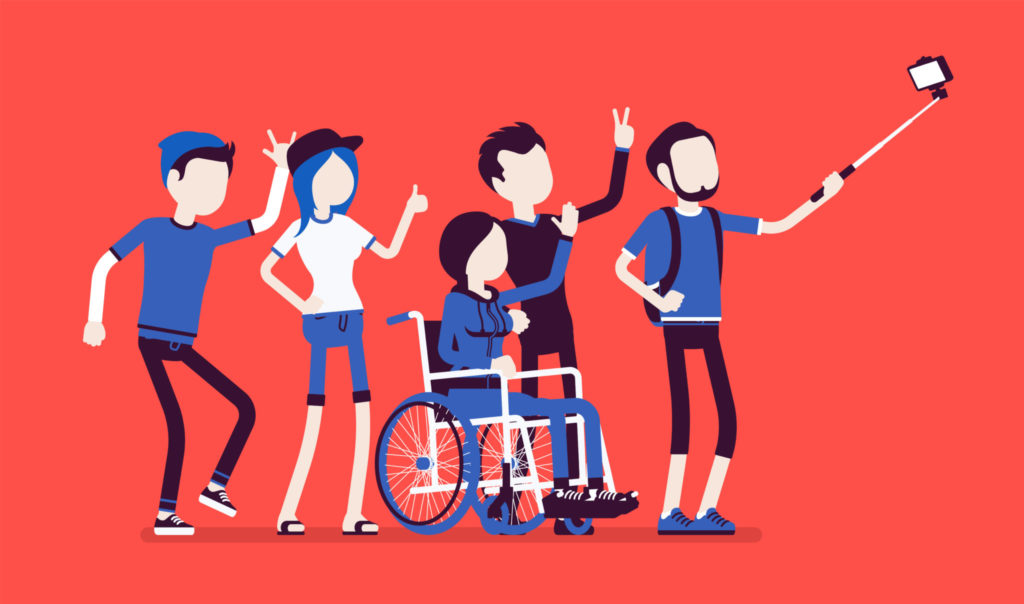My grandmother sat by the window, asking 5-year-old me about my day and what I plan to do for the weekend. Her leg started to move. Then it shook. Then, both legs were convulsing, forcing her entire body to shake uncontrollably. My mother gently held her hands on her mother’s shoulder until it passed. That image of my grandmother shaking is a vivid image I still carry with me today, but it also something I would see many times over.
Debilitated from the neck down, my grandmother spent the better part of her life in a long-term care hospital. Her life glowed strong through her eyes, and family visits were a special time for all of us. I remember hoping that her legs shaking was a sign of recovery. Of course, that would never come to be. Her legs only shook because of muscle spasms, despite the care she received.
The ‘book reader’
My grandmother loved books. But this was the time before computers and before e-books. Since she could not use her arms and hands to lift the book to her face or flip the pages with her fingers, it was not possible to check books out of the library and put a stack next to her bed. The best option was a book reader.
Picture the following scene in your mind’s eye. You are in a hospital room on the first floor. You are sitting in your wheelchair and have a full window that looks out into the grassy area surrounding a parking lot. You can see visitors walking in, birds flying by, a few trees and that nurse that goes out every hour for a smoke break. You have seen it all before. It is time to leave reality and read a book about someone else’s fictional adventures. Directly in front of you is a tall table, something akin to a standing desk you might use at work today. On that desk is a large, metal, rectangular machine. The machine looks something like a 1950’s idea of what a science fiction television looks like. But, instead of a screen, there are two book pages in a plastic sheath. On the left is the front page and on the right is the back page. A large metal arm protrudes from the machine, with a putty-like tip that is lined up with your chin. You press into the machine to progress the pages. Inside that machine, a small motor rotates a large roll of plastic that contains all the pages to your book. You watch as the pages you just read roll up and into the back of the machine as a new set of pages emerge from the bottom. You remove your chin to stop the motor and continue reading.

Getting the books ready was quite a process. Since we had to rip pages out of books, we could not just get them from the library (they have something about wanting their books returned in one piece). Also, we always had to purchase two of the same books. Why two books? Because we needed to put the front page on the left side and the back page on the right.
And so it was, we went out and purchased books for grandma, ripping out pages, and slipping them into their individual sheaths. Now don’t get me started about the times when nearly all pages were complete, just to find an extra page or two. That meant unrolling the whole thing and figuring out how to match the pages back up. My mother and my aunt did that work more than us kids, so I can only imagine what it must have been like putting these books together week after week.
The design of the bedroom, the simplicity of the book reader interface, the placement of the machine for optimal reading were all carefully considered and it gave her that one more thing to look forward to the next day. And that is not the only thing she was able to do.
Somehow my grandmother managed to paint me a coin jar in a ceramics class using nothing but a paintbrush and her mouth. She did not need a working body to be a great listener and provide the sage advice that I still use today. She even spoke about living in a wheelchair and the importance of keeping a positive outlook. It is easy to walk by someone and say, “that is horrible” and it is another thing to walk by and say, “I wonder how I can help improve this person’s life?”
The importance of inclusive design
The great thing about technology is if there is a problem, you can find a way to address it. Can’t see the screen? The device can read it out to you. Hearing-impaired? Place a video call and sign a conversation. We take for granted just how new some of this technology really is and how we are just getting started in designing more inclusive and accessible products.
A conversation with Vince Abbate from Intuit
I highly recommend you watch this video to learn how inclusive design can have a real impact on people’s lives.
[tg_youtube video_id=”ZklXouXyORk”]
In today’s conversation with Vince Abbate, senior content designer, Intuit QuickBooks Online, you will learn how he and his colleagues take deep care into building their products with inclusiveness and accessibility in mind. You will also learn how inclusive design goes deeper than just checking a bunch of accessibility checkboxes to meet a standard. You need to consider the user and make sure you include them in the design journey.
You can reach Vince on LinkedIn.
Special thanks to Scott Abel, The Content Wrangler, for introducing me to Vince.
